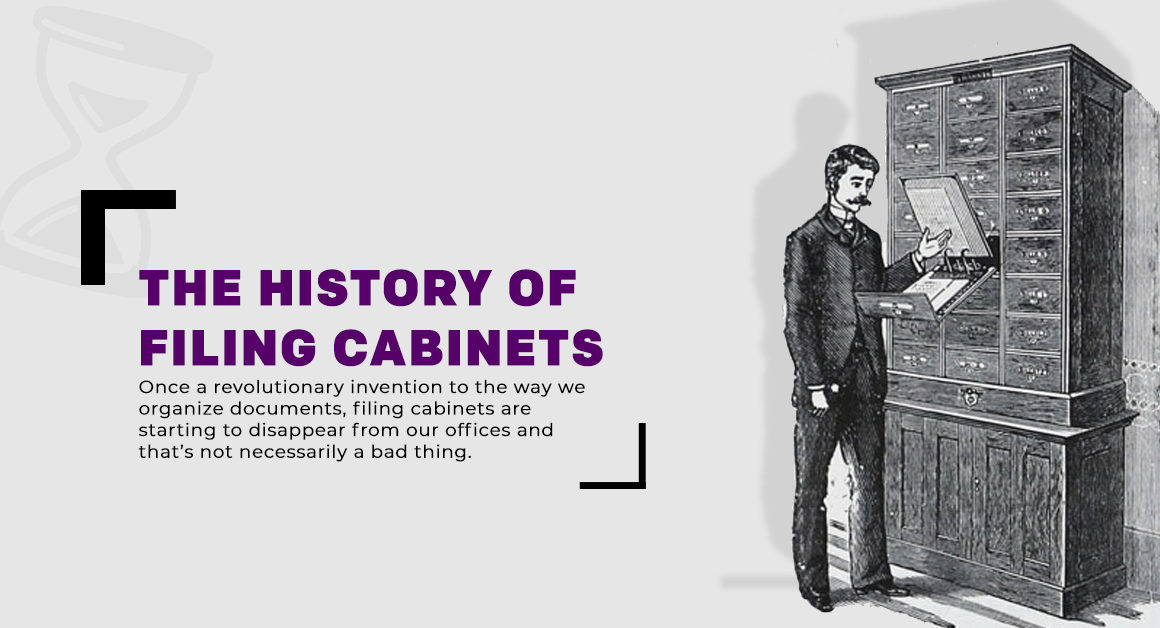The History of Filing Cabinets

When it comes to document management, we have all seen that metal box in almost every office around the globe- a filing cabinet. Usually old, maybe not even in use anymore. For years it was a staple in the workplace—but was it efficient in helping us remember where things went?
Businesses required to keep records of documents resulted in a need for a system to keep all of their information safe.
After realizing that papers were not required to be tarnished for the sake of filing them, Edwin G. Seibels invented the vertical filing cabinet system in 1898, and revolutionized the way we organize our documents. Before the filing cabinet, most documents had to be rolled or folded up and stored in small holes in the wall, forcing important documents to be tarnished upon storing them away, a problem Seibel was looking to solve with the filing cabinet.
Yet as time goes on, certain inventions become obsolete. Cell Phones have replaced landlines, cars have replaced the horse and carriage, and although most computers are still produced with printing capabilities, the usage of the filing cabinet is starting to dwindle as documents and records are becoming digitized.
Although at the time the filing cabinet was the most efficient way to store documents, it was never the most efficient at helping us find them again. Essentially, it is nothing but a mere storage locker for paper documents. But when the time comes to find exactly what you are looking for, you might have difficulty remembering where exactly you stored it in the first place—or even more difficulty when Bob from three cubicles down misplaces documents in the wrong folders.
It all depends on how frequently you are faced with that specific type of document. Think about how many times you get a piece of mail. Unless this mail delivered to you was urgent, it simply gets thrown aside and into a jungle of other unopened mail pieces.
The human brain remembers memories only as strong as the connection you have to that specific topic. If you received multiple documents about the same thing, you are frequently reminded of it and have a stronger neurologic pathway to that memory. For those who end up having to dive through stacks of paper to find one single document, this may end up happening more often than we’d like.
Although with time, we adapt and evolve upon the way we do things to make our lives easier. The filing cabinet helped documents stay in good shape, but wasn’t the fastest way to find a document. Now, with the development of digital document management, a quick search will bring up all of the files that you are looking for without diving through a stack of papers. The future is a beautiful thing.
Learn more on how digital document management is evolving and how your business processes should to here.
